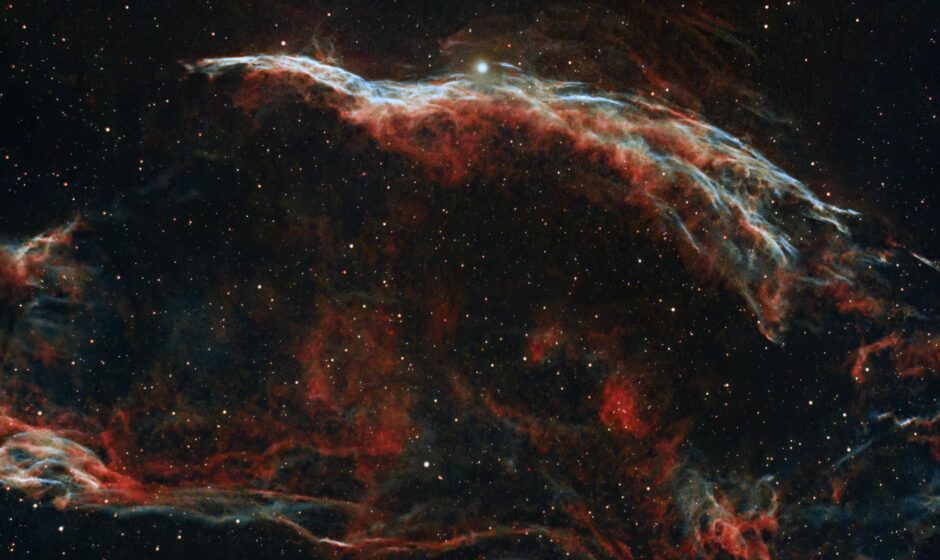Galactday: 55378.5
For all the cosmic marvels humanity has uncovered — from galaxies swirling billions of light-years away to the secrets of subatomic particles — one of the most fundamental questions remains unanswered: Why is there something instead of nothing? Photo by Wayne Zuhl
According to our best scientific understanding, the Big Bang should have created equal parts matter and antimatter. And yet, we look around and see a universe brimming with matter — from the stars and planets to our very own bodies. Antimatter, by contrast, is nearly nonexistent in nature. This imbalance is one of the greatest unsolved mysteries in physics and cosmology, known as the matter-antimatter asymmetry.
The Cosmic Cancellation Problem. Antimatter is the mirror opposite of matter: for every type of particle, there exists a corresponding antiparticle with the same mass but opposite charge. When a particle meets its antiparticle — say, an electron and a positron — they annihilate in a flash of pure energy.
If the Big Bang had produced equal amounts of matter and antimatter, they would have annihilated one another completely, leaving behind only a sea of photons. There would be no stars, no galaxies, and certainly no life. And yet, here we are — a universe built almost entirely of matter.
The Search for an Asymmetry. Physicists believe that in the early universe, something tipped the balance just slightly in favor of matter. This small excess, estimated to be about one extra matter particle for every billion particle-antiparticle pairs, was all that was needed to give rise to everything we observe today.
To explain this, scientists explore several lines of inquiry. One of the leading hypotheses is a process called baryogenesis, which attempts to describe how more baryons (the particles that make up protons and neutrons) than antibaryons could have emerged.
Baryogenesis relies on three key conditions, outlined by Soviet physicist Andrei Sakharov in 1967. First Baryon number violation, there must be interactions that can create or destroy baryons. Second, C and CP violation, the laws of physics must not treat matter and antimatter exactly the same. Specifically, they must violate charge conjugation (C) and charge-parity (CP) symmetries. And third, departure from thermal equilibrium, the universe must have passed through periods where it was not in a uniform thermal state.
Clues in CP Violation. The Standard Model of particle physics does allow for CP violation, and this has been observed in experiments involving certain subatomic particles, such as kaons and B-mesons. However, the degree of CP violation within the Standard Model appears far too small to account for the overwhelming dominance of matter over antimatter.
This leads scientists to search for new physics — phenomena or particles beyond the Standard Model — that could provide the additional sources of CP violation needed.
Neutrinos and Leptogenesis. Another promising avenue is a theory called leptogenesis, which involves the behavior of neutrinos, the nearly massless, chargeless particles that rarely interact with anything. If heavy versions of neutrinos existed in the early universe and decayed in ways that favored matter over antimatter, this could have led to the imbalance seen today.
Experiments around the world, including those at CERN and neutrino observatories in Japan and the U.S., are working to study neutrino behavior in greater detail, hoping to uncover more about their masses and how they oscillate — clues that could support the leptogenesis model.
A more speculative — but not impossible — explanation lies in the concept of the multiverse. In this idea, the Big Bang didn’t produce just one universe, but many. In some, matter and antimatter may have annihilated completely. In others, matter might have gained the upper hand. We simply exist in one of the rare universes where matter prevailed, because otherwise, we wouldn’t be here to observe it.
This line of thinking, known as the anthropic principle, suggests that the laws and conditions of our universe appear finely tuned for life simply because they had to be — or we wouldn’t be around to ask the question.
Despite decades of research, the matter-antimatter asymmetry problem remains unsolved. But progress continues. The Large Hadron Collider, next-generation neutrino detectors, and advances in cosmological observation all offer potential breakthroughs.
As researchers push the frontiers of particle physics and cosmology, the hope remains that we may one day understand not just the mechanics of the universe, but why it exists in the first place. Until then, we live in the thin margin — the lucky sliver of the cosmos where matter triumphed and made life possible.




